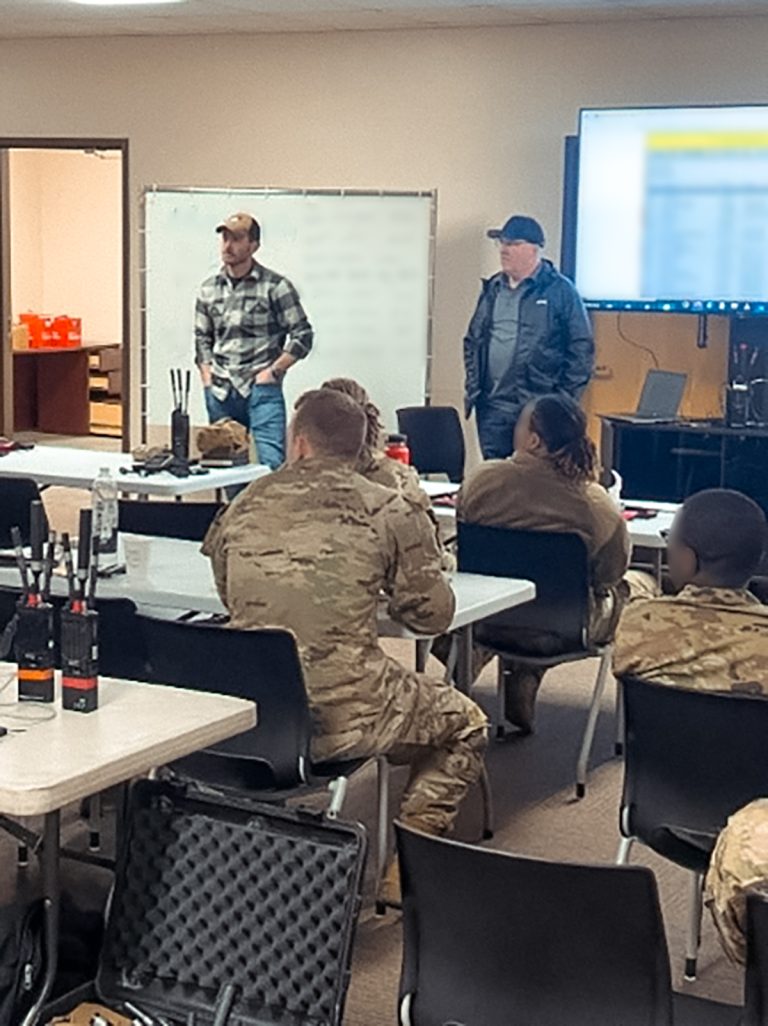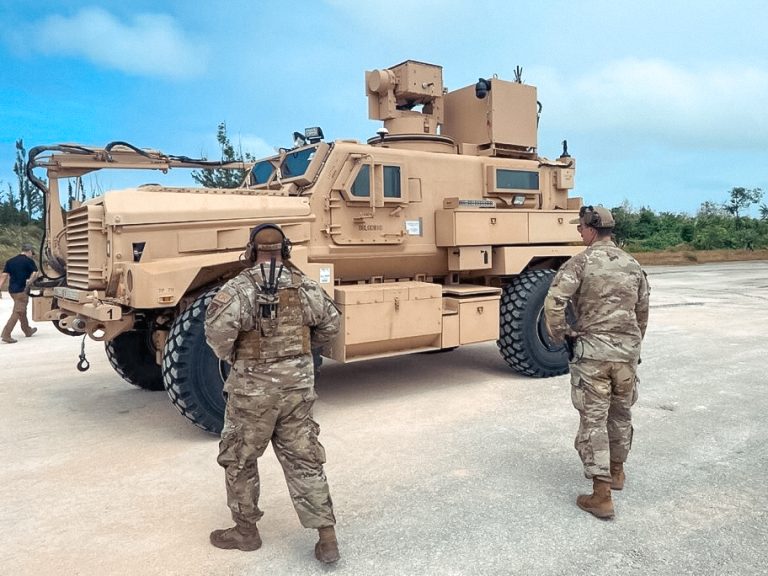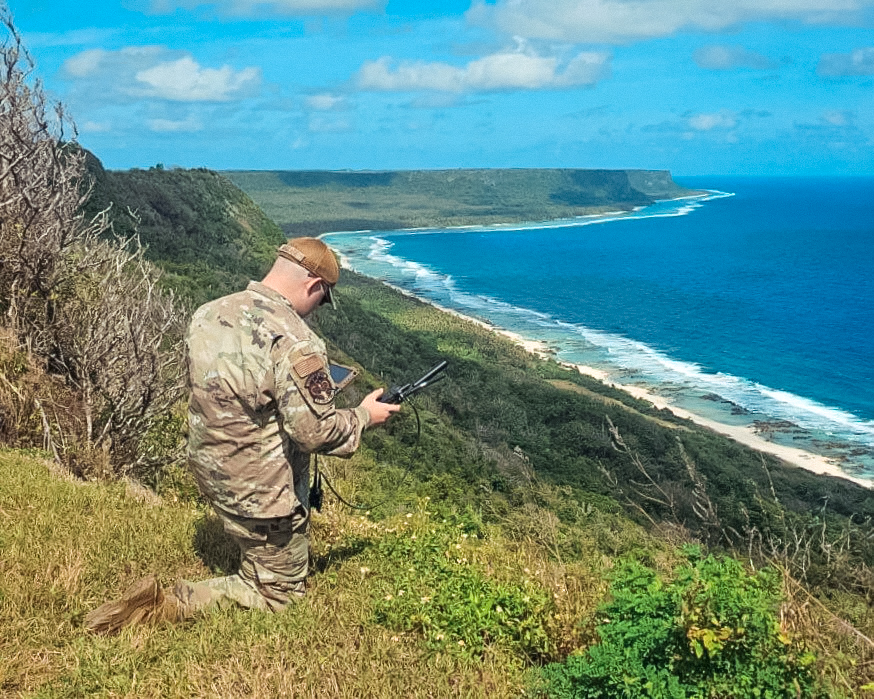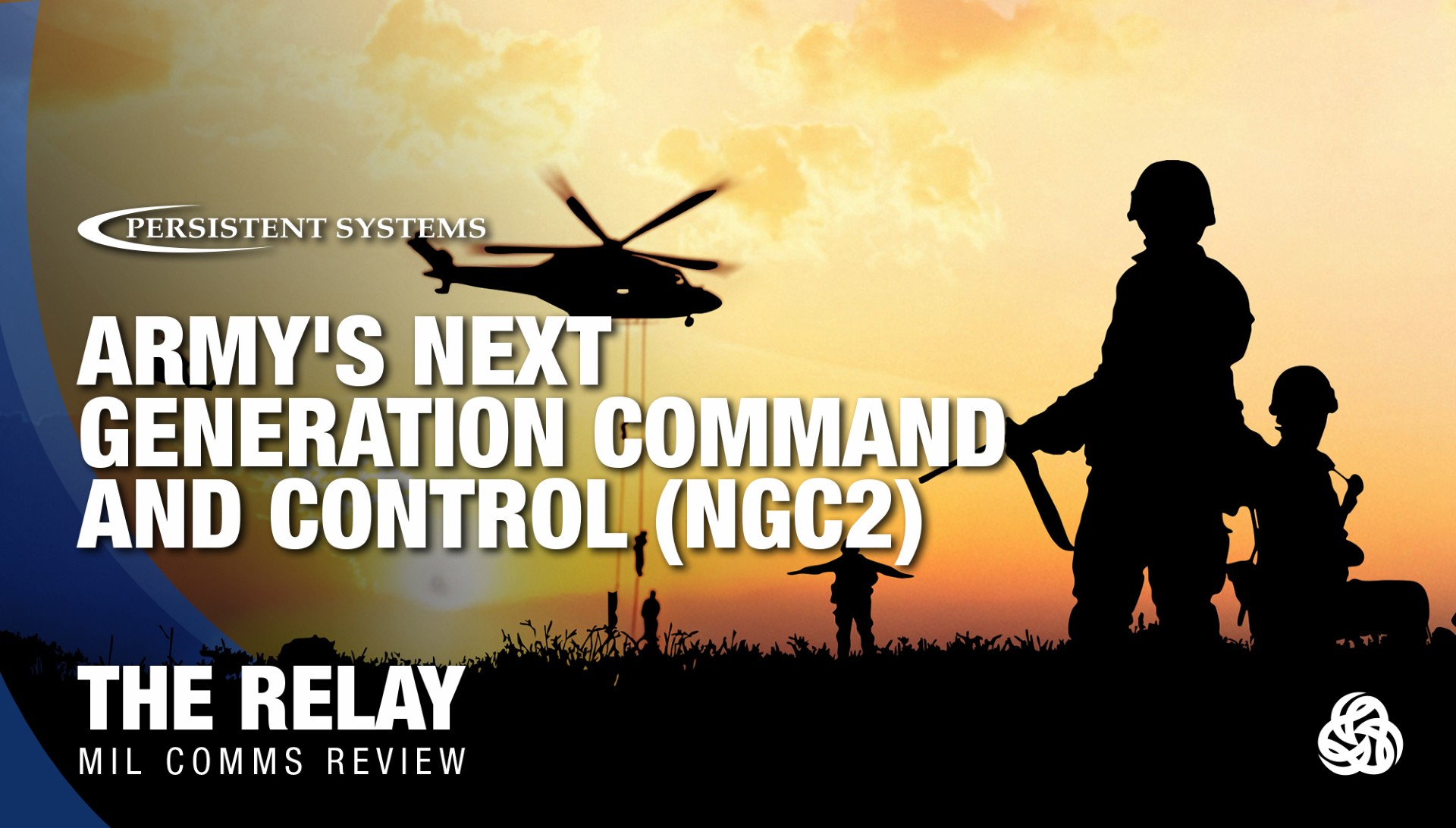The foundation of a successful JADC2 approach is the seamless sharing of information to connect warfighters, technologies, and communications/command-and-control (C2) centers anywhere in the world.
Today, a unified connection among people, places, and things is critical to defend against increasingly sophisticated weapon systems and peer adversaries’ capabilities. In response, the Department of Defense (DOD) instituted a JADC2 strategy to unite all warfighters and their systems on a unified mesh network to reduce the time needed to receive, analyze, and decide on information. In addition to JADC2, there is Combined Joint All-Domain Command and Control (CJADC2), which expands this effort to include foreign forces. While JADC2 unites multiple U.S. services’ capabilities, CJADC2 extends this collaboration and interoperability with foreign forces operating in the same theater or across the world, enhancing combined communication, C2 efforts across multiple domains.
As JADC2 or CJADC2 is a Department of Defense-level strategy, the Chief Digital and Artificial Intelligence Office and the Joint Staff J6 evaluate and experiment with CJADC2 capabilities in the Global Information Dominance Experiment series and integrate with each branch to enable its own C2 initiative to advance battlefield efficiency. These include the Department of the Air Force’s BATTLE NETWORK, the Army’s Project Convergence, and the Navy’s Project Overmatch. These initiatives look to network the joint battlefield to unify data from sensors, Robotic Combat Vehicles, dismounted warfighters, the air domain, and crewed vehicles together. However, as the amount of data on the battlefield increases, the challenge becomes getting the data to go where it needs to go. Operationally relevant testing events, such as Keen Edge and Project Convergence, assess different technologies’ abilities to transfer data across the battlefield. Throughout the past few years, Persistent Systems (“Persistent”) has been invited to multiple CJADC2/JADC2-focused operational exercises and events to support the Service’s use of its networking capabilities. As a non-traditional contractor, this enables us to refine product capabilities ahead of requirements and deliver enhancements that matter to operators.
The Wave Relay® mobile ad hoc network (MANET) is a highly mobile, scalable, and efficient solution proven to perform in contested and congested environments. In addition to the Wave Relay MANET, our over-the-horizon Cloud Relay™ technology is a software-defined wide-area network (SD-WAN) enablement capability that extends and connects disparate MANET bubbles to a resilient, connected, and disconnected cloud architecture.
_________________________________
Persistent Systems provided this technology during these key events:
Mobility Guardian 23: Enhancing Remote C2 Setup
Mobile Guardian 23 was an agile combat employment (ACE) centered exercise in the Indo-Pacific Region. Conducted by Air Mobility Command, our team supported the Contingency Response Wing with our Wave Relay MANET and Cloud Relay™ capabilities in establishing C2 centers in remote environments. As the first wing deployed to a new location, they needed to quickly set up C2 to stay connected with the rest of their unit. In the past, it would take the units minutes, sometimes even hours, to establish communication when they used traditional tactical radios. Even with established communication, the network was unreliable and not adaptable to location changes. In contrast, when our Integrated Sector Antennas were placed throughout the region, and the wing was equipped with MPU5s, it only took seconds to establish a network. The Wave Relay MANET allowed these users to gather and disseminate information across the rest of the force, seamlessly add new nodes to the network, and stay connected despite the remote environment they were operating in. Our network solution optimized a CJADC2 approach to the Contingency Response Wing for greater airfield protection.

Patriot 24: Ensuring Disaster Readiness
Patriot 24 is a National Guard CJADC2-focused disaster readiness exercise with support from the Air Force Security Forces. In this exercise, we provided backup communications to automate the exercise’s primary, alternative, contingency, and emergency (PACE) communications plan by connecting Air Force Security Forces with the Defense Threat Reduction Agency’s network. To enable cross-team communication, we mounted MPU5s near Verizon Frontline trucks and used their 4G/5G hotspots to activate the Cloud Relay technology. Equipped with MPU5s and Rugged Display & Controllers (RDCs), dismounted Air Force Security Forces accessed audio, text, and force tracking on a shared digital map. In environmental disasters, as acted out in Patriot 24, a CJADC2 approach is essential to increase situational awareness for rescuing more civilians, mitigating a potential breakdown in law and order, and improving communication amongst emergency responders. The resiliency of our network and ability to connect disparate teams in any highly RF-congested landscape was crucial for unifying communications and keeping a CJADC2 strategy intact if the primary network failed. Supplying alternate or contingency communications ensures that if other networks fail, units will remain connected and will not lack critical information to coordinate and execute a swift and informed response.

Keen Edge 24: Advancing ABMS Capabilities
Keen Edge 24 is a BATTLE NETWORK exercise combining U.S., Australian, and Japanese forces in preparation for Valiant Shield. During this week-long event, we supported Air Mobility Command and Air Combat Command with our Infrastructure-Based Regional Operation Network (IRON) solution, using Integrated Sector Antennas mounted along the coastlines and dismounted MPU5s to share video, text, and audio data seamlessly amongst each other. For ABMS to be effective, it requires mature networking capabilities to rapidly process and manage communications from the edge. Utilizing the Wave Relay network and Cloud Relay firmware, the Air Mobility Command and Air Combat Command made their air image, video, and C2 information universally accessible as teams landed and moved across new locations. By sending data from the tactical edge, it was easier for the units to obtain critical information faster and coordinate attacks. In this exercise, the Wave Relay network met the mature technology requirement of ABMS to improve operational advantage throughout the Indo-Pacific region.
Valiant Shield 24: Enabling Agile Combat Employment
Valiant Shield is a joint training exercise conducted biennially across Guam and the INDOPACOM Area of Responsibility (AOR) with units spread across air, land, sea, and space. 2024 was also the first time this event included allied and partner forces. With operations in Hawaii, Guam, and the First Island Chain, we provided the communications network connecting these forward-deployed operating forces to fixed operations centers. In addition to the use of the Wave Relay MANET via the MPU5, a MANET-Cloud High Mobility Radio (MCHMR), the key to staying connected was our Cloud Relay capability, which provided forces access to the Internet, SATCOM, Starlink/Starshield, 4G/LTE, or 5G for constant connectivity. As our MANET connected fixed, deployable, and individual units at the edge, commanders tracked bombers, fighter jets in the air, personnel on the ground, and ships at sea. As the MCHMR was used to successfully demonstrate the Air Force’s Agile Combat Employment (ACE) concept, Valiant Shield is a prime example of how a rapidly deployable, scalable network, such as Wave Relay, is key to enabling CJADC2.
_______________________________________________

Throughout all these exercises, the key to achieving the JADC2 or CJADC2 vision was having one common network. A common network, like the Wave Relay MANET, allows forces to gather, pass, and view data without switching between multiple systems, platforms, or technologies. By taking a network-centric approach to CJADC2, data is made universally accessible when and where needed.
At Persistent, we ensure that every Wave Relay network user can leverage the strength of our common network to achieve their mission. Whenever the mission requires disaster response, quick unit deployment, cross-regional operations, or unification of multiple sensors, we provide a simplified solution that is lightweight, highly mobile, scalable, and resilient so that every warfighter can achieve mission success.
There is no warfighter, command center, ground vehicle, aerial vehicle, or sensor that the Wave Relay® network cannot connect—regardless of the network’s location or size. Our vision for CJADC2 is for every warfighter to always have the network connection needed to stay informed, make rapid decisions, and respond in real time to emerging threats.
With successful demonstrations behind us, Persistent Systems has recently showcased our innovative Wave Relay MANET solutions at Project Convergence Capstone 5 (PCC5) and is excited for the upcoming Mobility Guardian 25, further bridging the gap in global defense communications.
# # #
To learn more about Persistent Systems, please visit our website at www.persistentsystems.com or follow us on any social media!
LinkedIn: Persistent Systems, LLC
Instagram: @Wave Relay
Facebook: Persistent Systems, LLC
Twitter: @PSWaveRelay
YouTube: @PSWaveRelay



